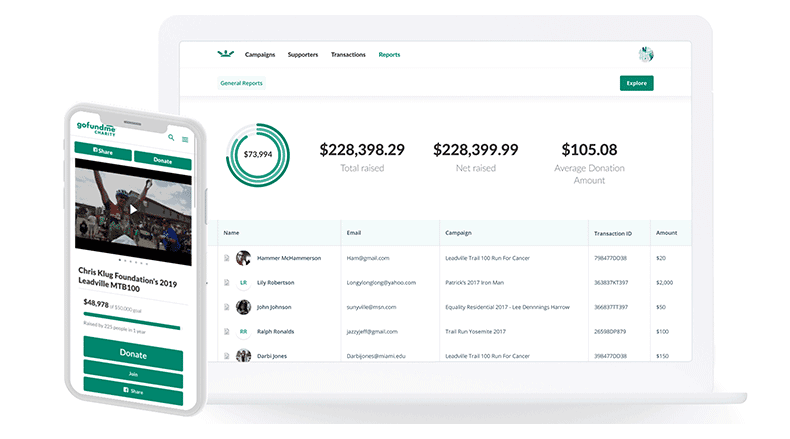Nonprofit Marketing: How to Build a Powerful Brand Name and Rise Assistance
Nonprofit Marketing: How to Build a Powerful Brand Name and Rise Assistance
Blog Article
The Role of Community Engagement in Nonprofit Fundraising: Building Lasting Relationships for Sustainable Support
Area engagement is increasingly identified as an essential component of effective not-for-profit fundraising. The techniques and methods utilized to engage neighborhoods vary commonly, elevating crucial questions concerning efficiency and influence.
Understanding Area Interaction
Community engagement is an essential part of successful nonprofit fundraising efforts. Nonprofits need to determine essential stakeholders-- such as community members, regional organizations, and other organizations-- to create efficient involvement strategies.
Efficient community involvement is predicated on active listening and responsiveness to the needs and rate of interests of the neighborhood. This procedure involves getting responses, understanding neighborhood dynamics, and guaranteeing that the company's goal straightens with regional priorities. Involving the area can take different kinds, consisting of public conferences, volunteer possibilities, and partnership campaigns, each created to encourage participation and investment in the organization's objectives.
Moreover, community involvement ought to be come close to as a recurring dialogue instead of an one-time initiative. By fostering a comprehensive atmosphere where area voices are heard and valued, nonprofits can develop a solid foundation for future fundraising undertakings. Ultimately, a deep understanding of neighborhood interaction encourages organizations to develop genuine connections that enhance their total effectiveness and sustainability.
Benefits of Strong Relationships
Strong relationships developed via area engagement yield many advantages for not-for-profit fundraising efforts. Primarily, these connections foster trust fund and reputation, vital parts in encouraging contributors to contribute. When prospective advocates see a nonprofit proactively entailed in their area, they are more most likely to believe in its objective and effect.

Moreover, these relationships help with reliable communication. Nonprofits can take advantage of their links to share tales of influence, updates, and needs, making certain that fans remain educated and involved. This open line of communication not just strengthens bonds but likewise urges word-of-mouth promotion, expanding the nonprofit's reach.
Lastly, solid community connections can attract new partners and enrollers. Services and people are more inclined to straighten with companies that show significant community involvement, supplying additional sources and support that can dramatically enhance fundraising abilities. Hence, growing durable connections with community involvement is essential to a not-for-profit's long-term fundraising success.
Approaches for Effective Engagement
Just how can nonprofits successfully engage their neighborhoods to improve fundraising efforts? Normal updates, engaging web content, and calls-to-action can galvanize neighborhood rate of interest and involvement.
2nd, organizing community occasions, such as workshops, volunteer chances, or fundraising drives, facilitates face-to-face communication, permitting nonprofits to display their impact and efforts. These occasions not just elevate funds however also grow connections and enable community participants to engage straight with the cause.
Third, executing individualized communication approaches can boost involvement. Tailoring messages to details contributor segments based upon rate of interests and past payments fosters a sense Read More Here of belonging and financial investment in the organization's objective.
Lastly, developing collaborations with local businesses and neighborhood leaders can amplify outreach initiatives. Collaborative efforts can enhance visibility and reputation, showing a collective dedication to the community's wellness. By incorporating these methods, nonprofits can build enduring partnerships that enhance fundraising initiatives and drive sustainable support.
Gauging Interaction Success
While involving the neighborhood is essential for effective not-for-profit fundraising, gauging the efficiency of these involvement initiatives is equally crucial. Establishing clear metrics enables companies to assess how well they are getting in touch with their audience and accomplishing their fundraising goals. Trick efficiency indications (KPIs) such as donor retention rates, volunteer involvement degrees, and involvement on social media sites platforms offer concrete information for analysis.

Routinely analyzing these metrics allows organizations to pivot their techniques when necessary, making certain that neighborhood engagement stays lined up with their overall goal. anonymous Additionally, sharing these outcomes with stakeholders promotes transparency and develops trust, urging additional area involvement. Inevitably, a durable measurement structure not just educates future fundraising efforts yet likewise reinforces the partnership between the not-for-profit and its supporters, laying the foundation for sustainable success.
Situation Research Studies in Area Effect
Countless case research studies illustrate the extensive influence that community interaction can carry nonprofit fundraising success. One notable example is the "Something to chew on" effort, where a regional food bank partnered with schools and organizations to host area suppers. These occasions not just raised funds but likewise cultivated a feeling of belonging amongst individuals, substantially raising contributor retention prices.
Another compelling situation is the "Eco-friendly Spaces Task," which entailed regional citizens in the revitalization of city parks. This effort not only garnered financial support from regional services but likewise cultivated a volunteer base that contributed to continuous maintenance and shows. The sense of ownership and satisfaction amongst area members equated into sustained contributions.
In the realm of arts, the "Art for All" campaign effectively engaged regional artists and patrons to produce collective art setups, causing boosted exposure and donations for a regional arts not-for-profit.
These examples highlight that when nonprofits prioritize area participation, they can develop lasting relationships that boost fundraising initiatives, making sure lasting assistance and promoting a dynamic community society. Such cases show that area engagement is not just an approach yet an important column of not-for-profit success.
Verdict
In verdict, community engagement is integral to check the success of not-for-profit fundraising efforts. By fostering solid relationships with neighborhood stakeholders, companies enhance trust and reputation, leading to enhanced benefactor retention and commitment. Applying efficient interaction methods and measuring their effect makes certain that nonprofits can adapt and grow. Ultimately, a robust foundation of neighborhood assistance not only intensifies fundraising potential however also cultivates a culture of cooperation, vital for accomplishing lasting organizational goals and sustaining purposeful impact.
Nonprofits must identify crucial stakeholders-- such as community participants, neighborhood businesses, and other organizations-- to develop effective interaction approaches.

In final thought, neighborhood engagement is integral to the success of not-for-profit fundraising efforts.
Report this page